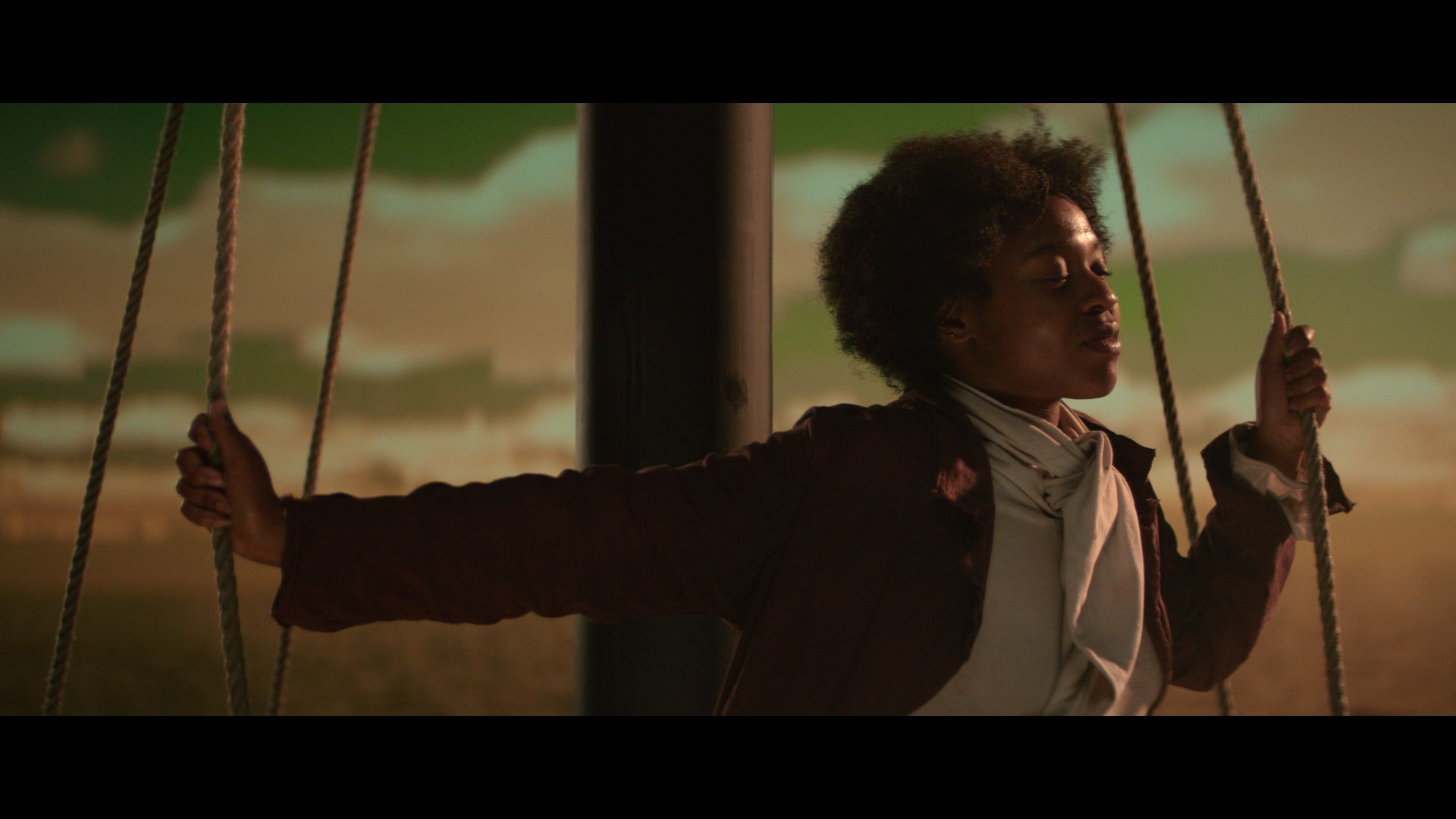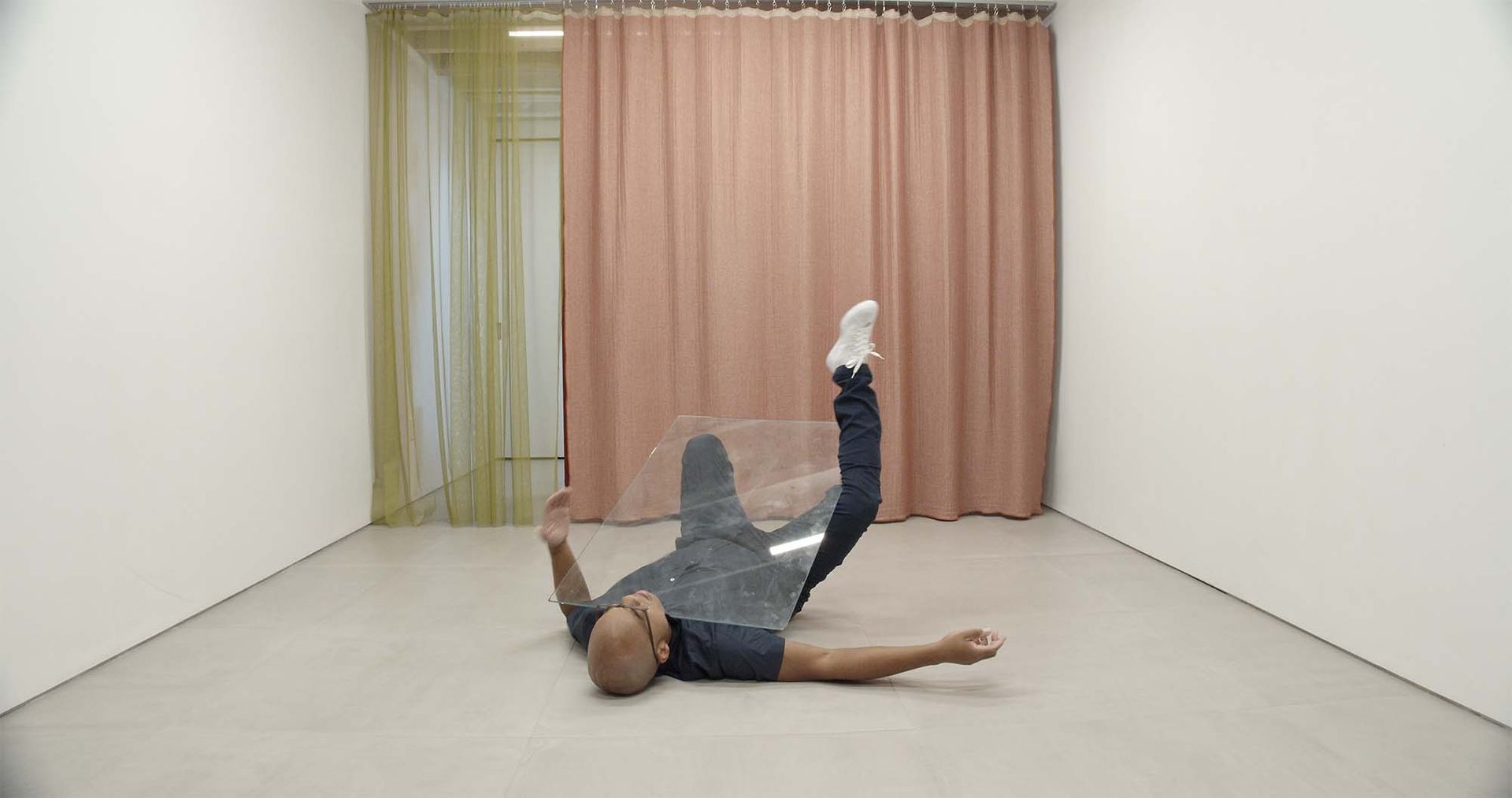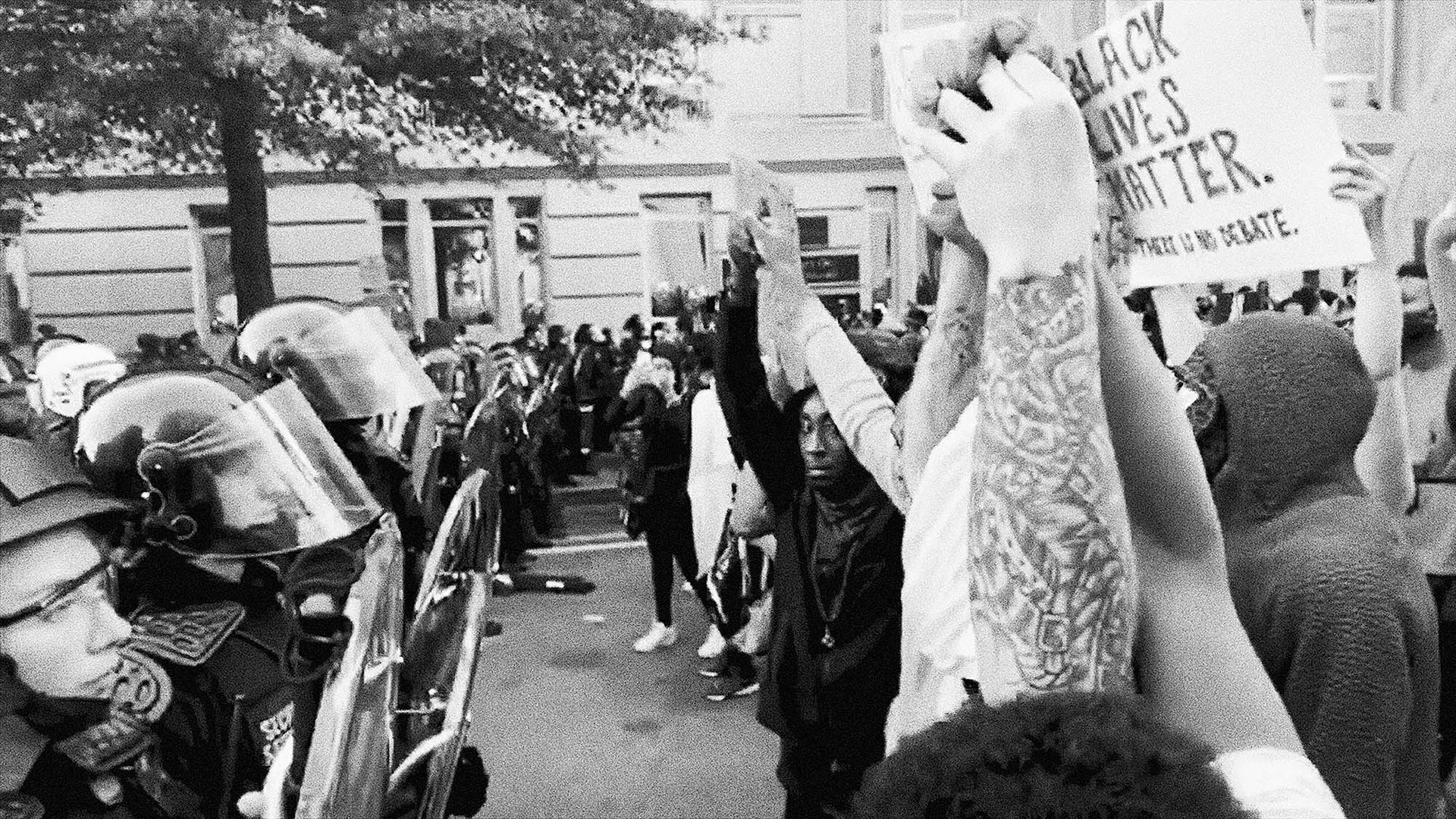The widely anticipated, pandemic-delayed 2022 edition of the Whitney Biennial, Quiet as It’s Kept, is actually quite noisy in its delivery. One thing that viewers will be struck by in the exhibition’s 80th edition is how prominently video work is featured throughout.
The biennial is trying to make sense of all the world has collectively experienced over the last two years while also reflecting many of the new realities people are living in today. Although there are competing soundscapes within the exhibition’s galleries, as well as other works, video is a focal point.
The medium of video art historically has proved difficult for viewers to engage with fully, especially in the context of such large group exhibitions, given the particular viewing constraints it entails and the pieces’ often-demanding lengths. It requires a viewer to sit and engage with it over a longer period of time, ideally in a setting that facilitates sustained concentration. With Quiet as It’s Kept, co-curators David Breslin and Adrienne Edwards seem to be aiming to usher in a new era for the medium by putting it front and centre, but the larger messages of some of these works and others are sadly lost due to the curatorial execution. Much of the show is hard to navigate due to the volume of works and the layout of the museum’s fifth and sixth floors. The exhibition is meant to serve as a commentary on a specific social moment, but there are elements within it that seem to fall to the wayside.
A video installation in the museum’s lobby gallery by Moved by the Motion (a collective co-founded by artists Wu Tsang and Tosh Basco) sets the tone for the entire show. The beautifully shot EXTRACTS (2022), made up of scenes and extra footage from the collective’s feature film MOBY DICK; or, The Whale (2022), is a career undertaking. Herman Melville’s novel Moby Dick (1851) has served as the basis of countless artistic projects over the last two centuries and it has been reimagined by Tsang, Basco and their collaborators. This is helping to give it new life and also setting the stage for some of the larger issues the biennial is raising.

Moved by the Motion, still from MOBY DICK; or, The Whale, 2022. Directed by Wu Tsang, Schauspielhaus. High-definition video, colour, silent and performance. Courtesy the artists
This 36-minute version of the video (the feature-length version screened at The Shed earlier this month) follows the whale both on the surface of the water and below. Utilising techniques pioneered during the silent film era, the collective re-imagines the whale's journey on a new scale while also commenting on issues such as colonialism and climate change. The video also depicts scenes among the ship's whaling crew that run the gamut from tense to celebratory. Visually stunning, EXTRACTS offers a new, psychologically rich interpretation of the book. The musical score by Caroline Shaw and Andrew Yee adds another layer to a deeply complex subject matter.
Tsang has become a well known filmmaker and director in her own right. In 2012, two years after receiving her MFA from the University of California, Los Angeles, she burst onto the scene with WILDNESS, a film loosely based on her own experiences at the city’s iconic LGBTQ+ bar the Silver Platter, where she hosted a weekly dance party and clinic. It is whimsical and beautiful, recounting the stories of many people within the LGBTQ+ community who are regulars at the bar and the bonds and friendships they make, while also centering the Silver Platter as their main point of connection.
This is the second Whitney Biennial to feature Tsang’s work, following the 2012 edition, which was curated by Elisabeth Sussman and Jay Sanders. A recipient of a MacArthur “genius” grant in 2018, Tsang has continued to explore and expand the bounds of immersive art, film, video and performance.
Dave McKenzie’s sculptural and video-based practice is another piece in the Biennial's video puzzle, giving it great depth and also a sense of the absurd. The exhibition features two of his sculptures, Drawing in Black # 2 and Drawing in Black # 3, and the two-channel video Listed Under Accessories (2022), which centres a solitary performance that brings out McKenzie’s sense of play and humour.

Dave McKenzie, still from Listed under Accessories, 2022. Two-channel digital video installation, colour and sound Courtesy the artist; Vielmetter, Los Angeles; and Barbara Wien Gallery, Berlin
Shot in a small room with white walls and one dusty rose-accented one, with a wooden desk in the background and sheer yellow and pink curtains, the 33-minute video shows the artist contorting his body and performing mysterious actions with various utilitarian objects such as a piece of plexiglass, a chair and a laundry bag. At one point, viewers see the artist trying to escape from the closed laundry bag. As McKenzie struggles to free himself, he creates various shapes and movements within the confined space. The video situates his work in a larger history of endurance-based performance.
Originally a printmaker, McKenzie found his way to performance in 2000 when he made a piece called Babel while he was still a student at the University of the Arts in Philadelphia. He attended the Skowhegan School of Painting and Sculpture in Maine and was an artist in residence at the Studio Harlem in Museum in 2003. This early momentum has continued to build over the course of his career and last year he staged a series of performances at the Whitney.
A decidedly less playful contribution is Alfredo Jaar's installation 06.01.2020 18.39 (2022), which consists of video footage from June 2020 Black Lives Matter protests in Washington, DC following the murder of George Floyd. Viewers must wait to enter the small screening room, which is closed off. The piece may be overdetermined in some ways, but it draws on larger issues of surveillance, the compulsion to document and social justice movements. It shows scenes of police in riot gear using flash grenades and tear gas on crowds of protesters in an effort to disperse them. A police helicopter is brought in to make them further scatter, and in one terrifying moment the pilot flies uncomfortably close to the crowd. Jaar zeros in on and amplifies this moment in the video—his installation features high-powered fans mounted to the room’s ceiling to recreate the movement and sounds of the helicopter.

Alfredo Jaar, still from 06.01.2020 18.39, 2022. Video projection, sound and fans Collection of the artist; courtesy the artist and Galerie Lelong & Co., New York and Paris
Jaar has had a long career as a successful multimedia artist who often responds to socio-political situations. He has made a number of important pieces in video, film and photography, and is perhaps best known for a 1994 work based on Rwandan genocide, The Rwanda Project, as well as A Logo for America (1987) and The Cloud (2000). Nevertheless, this is Jaar's first appearance in a Whitney Biennial.
These three works exist on a larger spectrum and are helping to anchor the biennial in different ways. Tsang offers a cinematically beautiful and complex re-imagining of Melville’s novel while bringing to light a contemporary reading of it. McKenzie, working in the tradition of durational performance artists such as Marina Abramović, Chris Burden and others, is creating performances for this cultural moment. Jaar is offering his take on the Black Lives Matter protests informed by his experience of the recent history in his native Chile. The strength of the show lies in many of the individual works and how artists like Jaar, McKenzie and Moved by the Motion are challenging viewers to engage with video works in more sustained and meaningful ways.
Whitney Biennial 2022: Quiet as It’s Kept, until 5 September, Whitney Museum of American Art.


